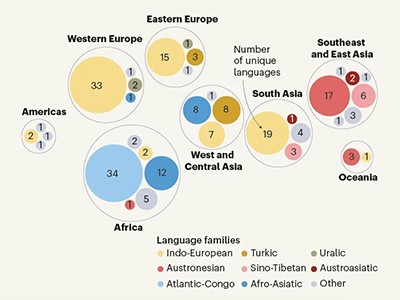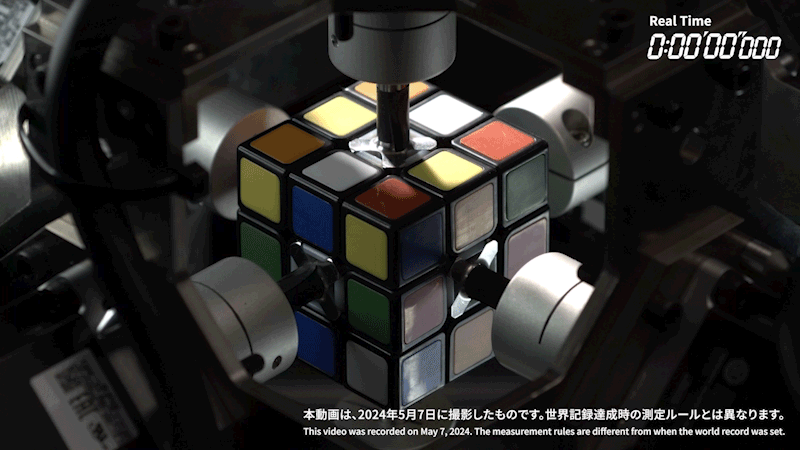Hello Nature readers, would you like to get this Briefing in your inbox free every week? Sign up here.

Many minor crashes involving autonomous vehicles don’t get reported to the police, which makes a comprehensive safety analysis difficult. (Jason Doiy/Getty)
Statistics suggest that autonomous vehicles have fewer accidents than human drivers — but limited data is hindering attempts to understand the safety of self-driving cars, say researchers. They analysed thousands of accidents and found almost 550 in which people and autonomous vehicles crashed in similar circumstances. During turns, the technology crashed twice as often as humans and, at dusk or dawn, five times more often. But without reliable reporting from self-driving car companies, the number of crashes available to analyse is “so low that no sweeping conclusions can be made” about the technology’s safety, says autonomous-vehicle researcher Missy Cummings.
Reference: Nature Communications paper
Tech giants including Google, Meta and Microsoft are describing their AI models as open source while disclosing little key information such as their code or training data. “To our surprise, it was the small players, with relatively few resources, that go the extra mile,” says language scientist Mark Dingemanse, who co-analysed 40 large language models’ openness. Open-source systems are often seen as more rigorous and will be exempt from the strict transparency requirements of the EU’s AI Act. A Google spokesperson remarked that “existing open-source concepts can’t always be directly applied to AI systems”.
Reference: 2024 ACM Conference on Fairness, Accountability and Transparency proceedings
Facebook owner Meta has expanded its AI translation model to 204 languages, including 150 ‘low-resource’ ones. These are tongues such as Tswana, Samoan or Gaelic, for which there’s not enough data to train a machine-translation system. The Meta model was fed with translations mined from the internet and around 6,000 ‘seed’ sentences created by professional translators. Although the translations are “not very good yet”, says Gaelic linguist William Lamb, he applauds the team’s effort. “What they should do … if they really want to improve the translation is to talk to the people, the native Gaelic speakers that still live and breathe the language,” he said.
Go in-depth with the Nature News & Views article (5 min read, Nature paywall) or read Nature’s editorial (4 min read)

Of the almost 7,000 languages spoken worldwide, about half are considered to be in danger of going extinct.
A chatbot can check another’s workings by asking it the same question multiple times and assessing how much the responses differ from one another. A high degree of randomness in meaning and nuance indicates that the output isn’t reliable. “If I wanted to check if you’re just making things up at random, I might ask you the same question over and over again,” explains computer scientist and study co-author Sebastian Farquhar. “If you give a different answer every time … something’s not right.” Two human judges who looked at 100 of the first chatbot’s answers agreed with the ‘judge’ chatbot 93% of the time.
Go in-depth with the Nature News & Views article (8 min read, Nature paywall)
Image of the week

Mitsubishi Electric
Blink and you’ll miss it: Mitsubishi’s TOKUFASTbot solves a Rubik’s Cube in around a quarter of a second — a new world record for a robot. An AI algorithm identifies the cube’s colours, particularly the difficult-to-distinguish hues red and orange, and then generates the shortest rotation sequence to a solution. The robot’s motors move so fast that, during the first record attempt, the cube couldn’t keep up and became jammed. (Smithsonian Magazine | 4 min read)
Features & opinion
Specialist AI systems could soon provide most of the feedback given during traditional peer review, argues a Nature Biomedical Engineering editorial. This would leave human reviewers free to focus on high-level conceptual and technical feedback. AI agents might even become the go-to interface for reading papers with each paper having its own persistent ‘author chatbot’ ready to answer any queries, the editorial suggests. But first, the community will need to solve problems that could be exacerbated by AI systems, such as fake data and plagiarism.
Nature Biomedical Engineering | 6 min read
Some autistic people are turning to chatbot companions such as Paradot or Replika in search of connections they can’t always find with other individuals. “These interactions give me more confidence when talking to real humans because they’ve helped me to try certain conversation skills that can be applied in real life,” says Elías López, who was diagnosed as autistic at the age of 30. So far, there has been little research into whether these chatbots have therapeutic benefits. Some mental-healthcare professionals are concerned that the practice could exacerbate users’ isolation. “It should be clear what the risks are and what the true value is,” says clinical psychologist Catherine Lord.
Today, I’m chuckling at food combinations that only an algorithm could find tasty, such as ice cream with extra ketchup and butter. This was one of the many strange and senseless dishes McDonald’s new AI-powered voice-ordering system managed to produce. The chain has scrapped the trial.Help me keep this newsletter palatable by sending your feedback to ai-briefing@nature.com.Thanks for reading,
Katrina Krämer, associate editor, Nature Briefing
With contributions by Flora Graham
Want more? Sign up to our other free Nature Briefing newsletters:
• Nature Briefing — our flagship daily e-mail: the wider world of science, in the time it takes to drink a cup of coffee
• Nature Briefing: Microbiology — the most abundant living entities on our planet – microorganisms — and the role they play in health, the environment and food systems.
• Nature Briefing: Anthropocene — climate change, biodiversity, sustainability and geoengineering
• Nature Briefing: Cancer — a weekly newsletter written with cancer researchers in mind
• Nature Briefing: Translational Research covers biotechnology, drug discovery and pharma

